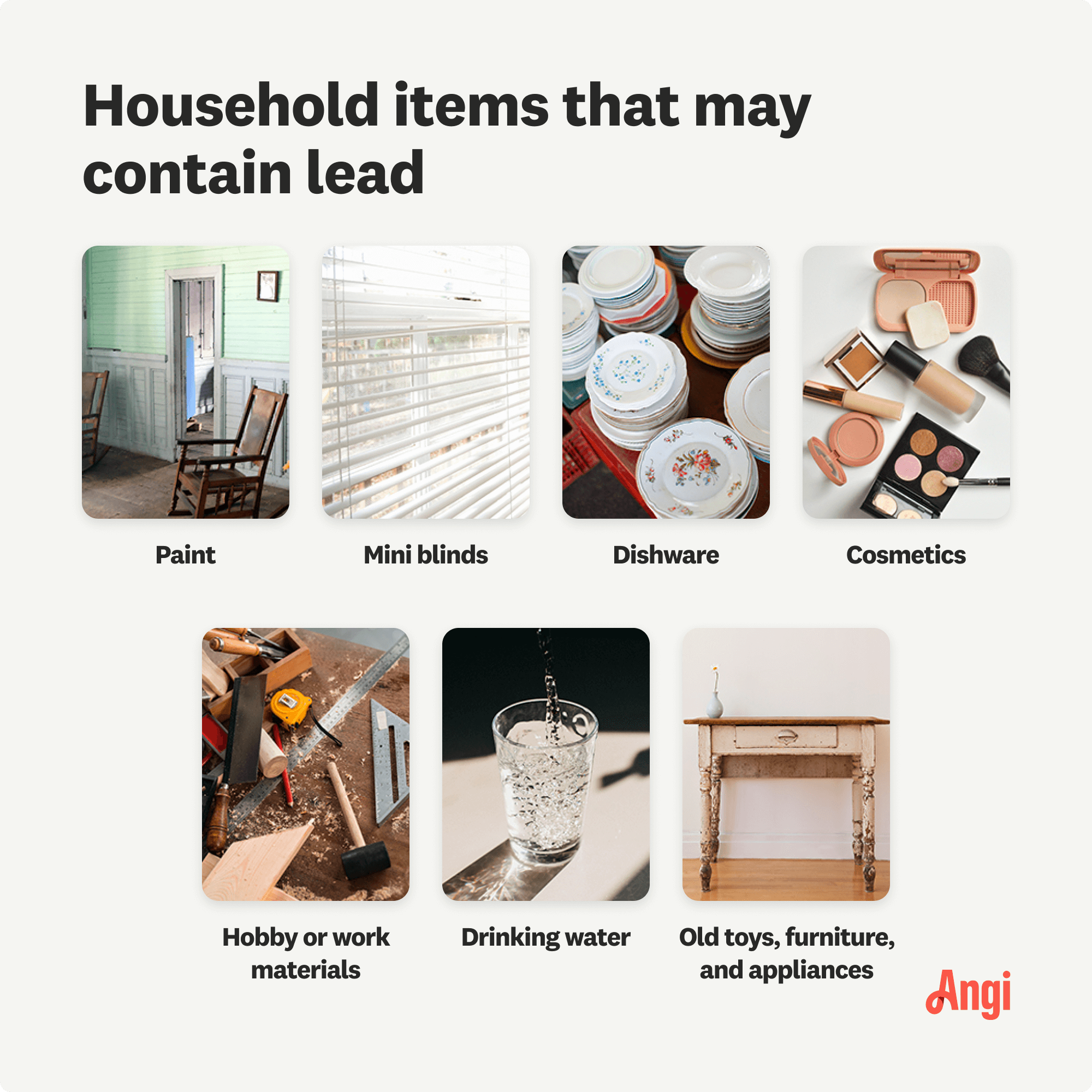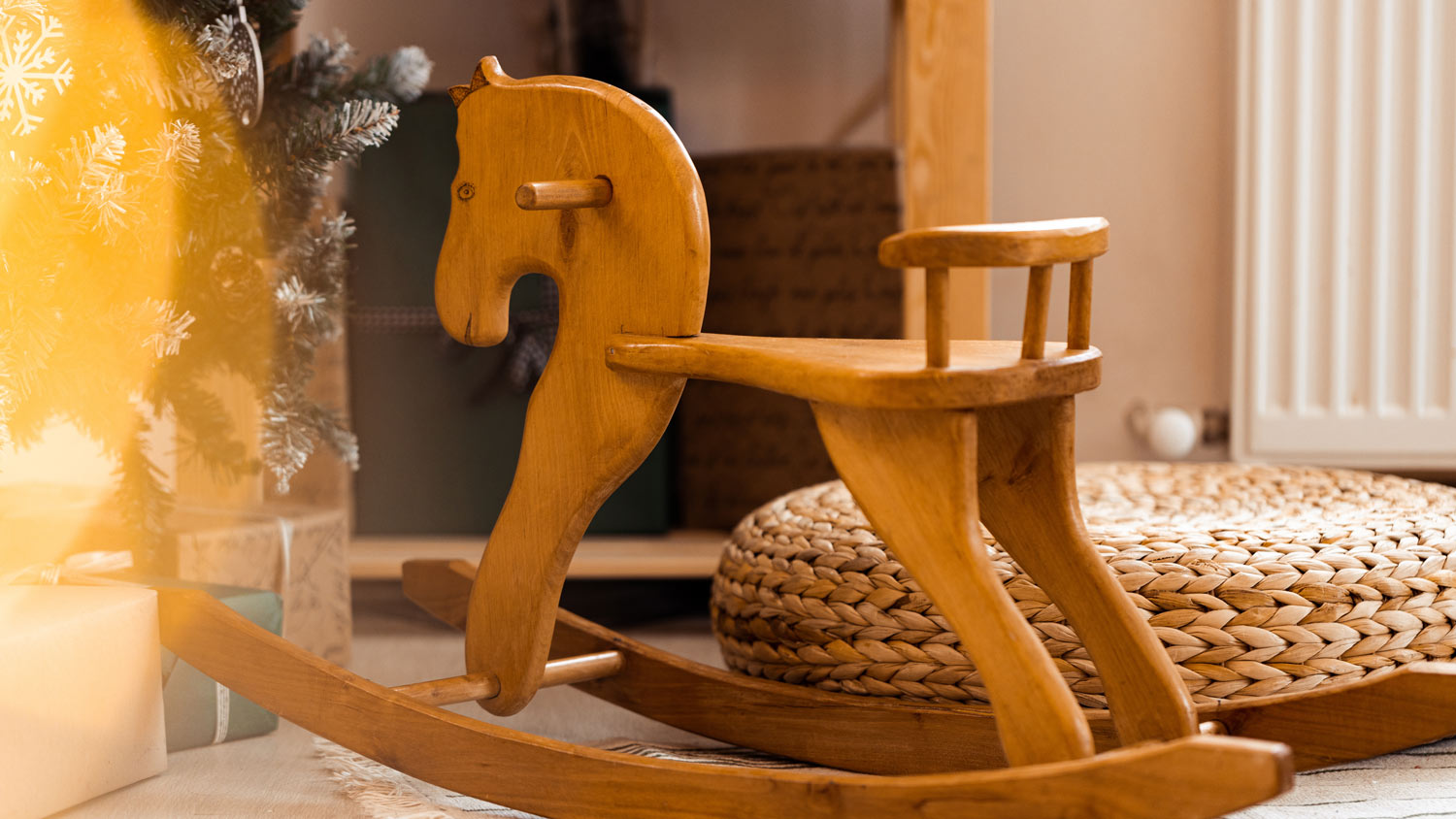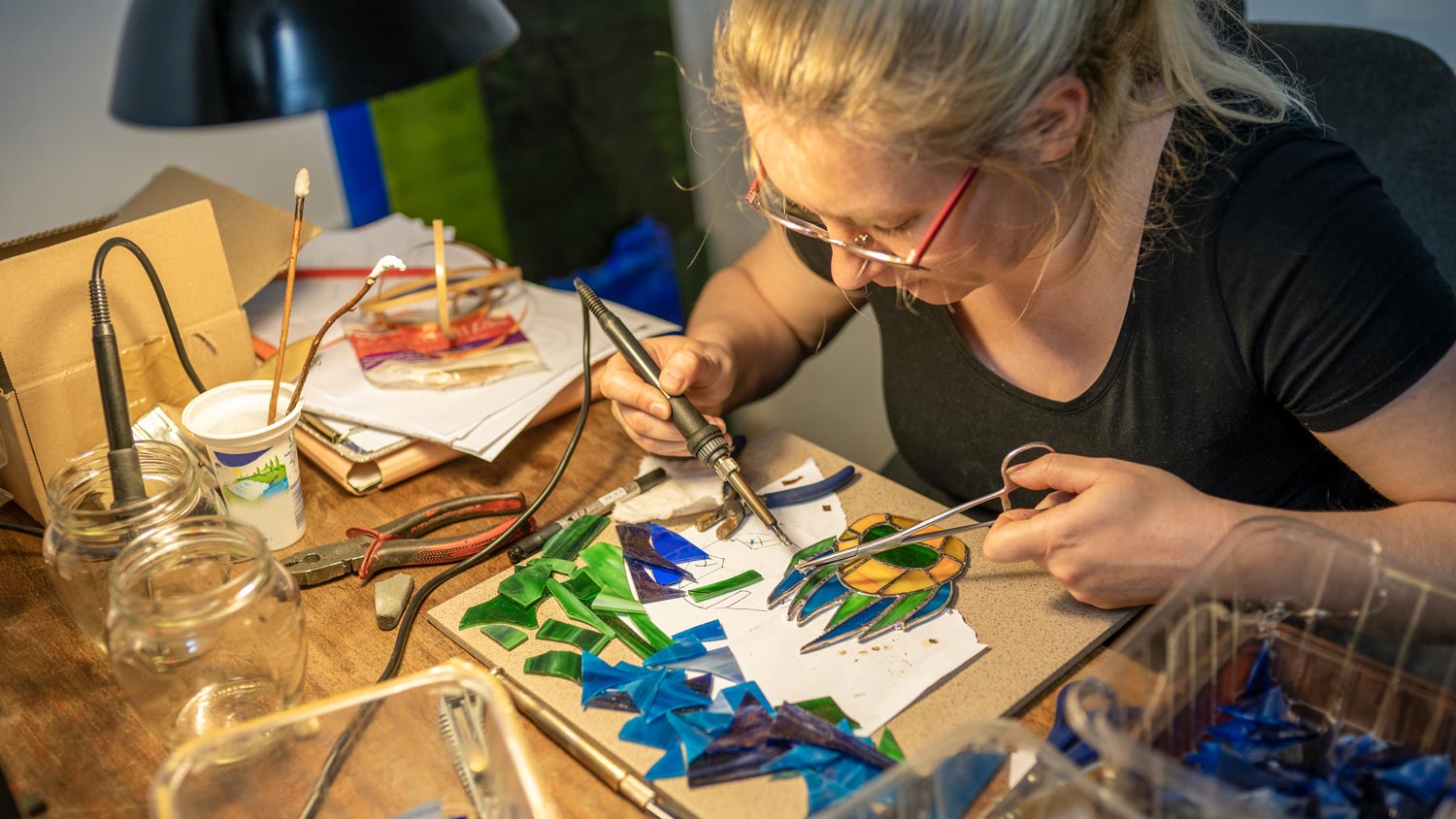What Has Lead In It? Watch Out for These Everyday Household Items
Peeling paint isn't the only place lead likes to lurk


Lead is a dangerous chemical that poses a significant health risk to adults and children.
Lead is not only found in paint but various spots throughout the home.
Drinking water, old furniture, dishware, and cosmetics all contain lead.
Lead is useful in certain scenarios, such as car batteries and industrial cable sheathing, but having the chemical element in your home can be risky. Lead exposure can lead to lead poisoning, which makes your family members seriously ill and is particularly nasty to children.
According to the Centers for Disease Control and Prevention, childhood lead exposure causes damage to the brain and nervous system, slowed developmental growth, and speech problems. In other words, your home should be 100% free from lead in all its forms, but this is trickier than you think.
Many common household items include hidden sources of lead, leading to lead exposure over time. Here are some of the biggest offenders you must take care of ASAP, whether by yourself or hiring a local lead abatement contractor.


Paint
When you think of lead in your home, lead paint is one of the most common occurrences. You can identify lead paint by looking for cracking or wrinkling, which is often called “alligatoring,” or a chalky residue when rubbed. Lead paint is most commonly found in homes built before 1978, when most states started banning its use. Lead paint can still be present in your home, possibly buried under layers of new paint.
If you suspect lead paint in your home, you should hire a certified lead paint inspector to test for it. Lead paint removal costs on average $3,500, but can vary depending on the size of the room. Lead paint removal is not recommended for a DIY project, as the risk of airborne exposure is high during the removal process. A certified pro will come with the appropriate safety precautions, like personal protective equipment and proper disposal. Additionally, some local laws have specific requirements on lead paint removal and who is qualified to handle it.
Drinking Water
If your home and plumbing pipes come from before 1986, your drinking water is a potential source of lead exposure. For decades, plumbers and homebuilders practiced lead-based plumbing due to the substance's malleability and low melting point. You can't taste, smell, or see lead in your drinking water and—even worse—boiling the water doesn't solve the problem.
There are many available routes to hire to test for lead in your water. Contact a lead risk assessor, your local health department, or a local water supply authority for testing information. Local water authorities must test the water supply for lead every year, and some of the results are accessible via this U.S. Environmental Protection Agency safe drinking water database.
Also, drink cold tap water instead of warm water, as the latter leaches lead from the plumbing. If all else fails, call up your local plumber for some individualized testing and, if necessary, pipe replacements.
Old Toys, Furniture, and Appliances

Your antique rocking chair from Aunt Ruth? Your favorite wooden dump truck you inherited from good ol' Dad? Or the antique doll furniture you're hoping to pass on to your daughter one day? Yup, it could all be covered in lead-based paint. Lead paint adds durability, so manufacturers heavily relied on the substance until health risks came to light. Lead shows up in old toys, old furniture items, and even some appliances.
If you suspect an item in your home contains lead, throw it out. If the item holds sentimental value, test it before throwing it out. As for newly manufactured items, the U.S. Consumer Product Safety Commission maintains a safe products database, including those recalled for lead. All told, there are many ways to find lead-safe companies.
Vinyl Mini Blinds
Vinyl mini blinds made before 1997 contain polyvinyl chloride (PVC), which previously included lead as a stabilizer. These posed a health risk to young children who could accidentally ingest small amounts of lead after touching the blinds.
If your blinds have been in your home since the 90s, it may be worth replacing them out of precaution. You can usually do this yourself without posing any health risks. Today, vinyl mini blinds are manufactured without lead or with very low levels, but you can keep an eye out for blinds with a “lead-free” or safety label when shopping for replacements.
Dishware
Unfortunately, some manufacturers still use lead to paint dishware for added durability. Lead paint on the dishes we eat from? No, thanks. This practice isn’t geographically tied to any specific location since disreputable manufacturers throughout the globe rely on the hazardous chemical. Of course, the same holds true for vintage dishware.
Buy dishware certified as “lead-free” and not merely “lead-safe.” The former indicates a complete absence of lead, while the latter means there could be some lead but is within federal recommendations.
Cosmetics
Lead is found in a wide variety of cosmetics, including lipstick. In 2010, the U.S. Food and Drug Administration (FDA) released a study that found lead in nearly every lipstick sample tested, at levels as high as 7.19 parts per million (ppm). The lipsticks tested included big brands such as Procter & Gamble, L'Oréal, Revlon, and more. The FDA has since concluded that it's fine for cosmetics to have lead, as long as it's below 10 ppm.
However, a 2013 study by the University of California, Berkeley concluded that lipstick users applied the product an average of eight times per day, potentially absorbing 87 milligrams of lipstick every day. Hair dye is also a known culprit, as many manufacturers use lead acetate as a primary ingredient.
This is tricky because manufacturers aren't required by law to list lead as an ingredient. Look for brands that advertise lead-free cosmetics and those that are a Certified B corporation or verified by the Environmental Working Group (EWG). Certified B corporations pledge to balance profit with public service, while the EWG is an advocacy organization specializing in toxic chemicals and corporate accountability.
Above all else, keep makeup away from children. The relatively low amounts of lead present may not be toxic for adults, but they are dangerous for kids.
Hobby or Work Materials

If your hobbies include things like stained glass, pottery, or refinishing old furniture, you might be exposing yourself and your family to lead. Stained glass is a particular danger, as the colored pieces of glass fasten together with lead pieces. The same goes if you work with car batteries, radiators, paint, scrap metals, or industrial products of any kind. Even fishing tackle includes lead.
Wash your hands thoroughly with soap and water after engaging in your favorite hobbies, such as those listed above. As for work-based exposure, keep your clothes washed and your hands clean to avoid bringing lead from the workplace to the home. To go above and beyond, wear specialized "hobby time" clothes that never enter the rest of your home. And above all else, keep children away from your work or hobby areas, especially if that's where your tools and materials reside.
How to Test for Lead in Household Objects
At-home lead testing kits are available for purchase at most hardware stores. Typically it involves swabbing or scraping the surface and adding a solution provided by the kit. These kits are useful if you have a small areas or products that needs testing and you want to confirm any suspicions of lead presence. For larger areas, like testing walls for lead paint, it’s recommended you talk to a professional lead tester.
It’s important to note that these DIY testing kits are not 100% accurate. Issues like user error, insufficient sample size, contaminated samples, and misreading results can cause false positives or negatives. These tests also don’t meet legal requirements, so if you need to test for lead as part of selling your home, you will need to hire a professional.





- What to Do if You Have Lead Paint in Your Home
- Who Do You Call to Remove Lead Paint
- How to Remove Lead Paint: Every Method, Explained
- Important Lead-Safety Practices Checklist
- Who Do I Call to Remove Lead Pipes?
- New EPA Lead Pipe Plan: What Homeowners Need to Know About Replacement Costs
- Can You Paint Over Lead Paint Safely?
- The Homeowner’s Guide to Lead Clearance Testing
- How to Prep a House for Exterior Painting in 8 Steps
- 10 Common Painting Mistakes Homeowners Should Avoid










